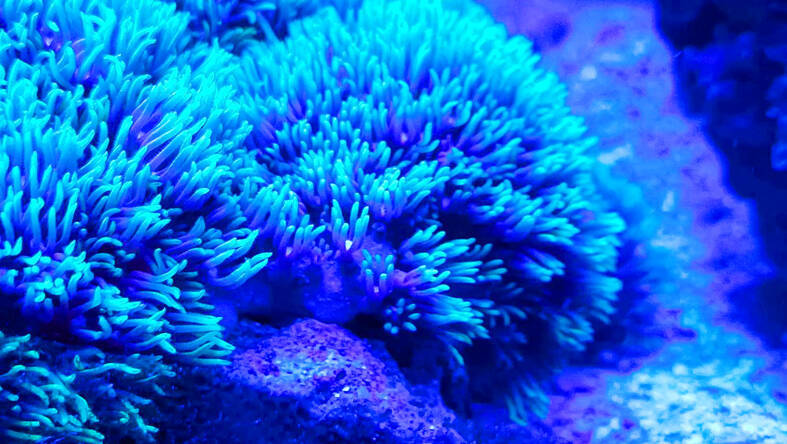《TAIPEI TIMES》 Microplastic pollution is altering coral, study finds

Coral is pictured in an undated photograph. Photo courtesy of National Sun Yat-sen University
/ Staff writer, with CNA
A study published by scientists at National Sun Yat-sen University has shown how microplastic pollution is altering the structure of coral skeletons, putting them at greater risk of being damaged or dissolving.
The study, led by department of chemistry chair Hsieh Shu-chen (謝淑貞) and Chen Chen-tung (陳鎮東), chair professor for research in the department of oceanography, was published last month in the journal Environmental Chemistry Letters, the university said last week.
Summarizing the study’s results, Hsieh said it showed how microplastic pollution directly drives the degradation of coral reefs and the diverse ecosystems they support.
An increasing number of coral reefs, particularly those in polluted environments, are likely to face such degradation unless stronger measures are taken to mitigate plastic pollution, Hsieh said.
In the study, the team cultivated the coral species Briareum violacea and exposed it to polyethylene microplastics at concentrations of 0, 5, 10, 50, 100 and 300 milligrams per liter for seven days.
Following the exposure, the team measured the changes in the coral’s skeletal structure, solubility and the levels of calcium in the seawater, the university said.
The researchers found that of the two calcium carbonite crystal structures found in healthy coral — calcite and aragonite — exposure to microplastics caused the structure of calcite to weaken significantly.
As calcite crystals gradually disappeared from the coral, they were replaced by a much more unstable crystalline form, known as amorphous calcium carbonate, the university said.
The team said these changes harmed the structural integrity of the coral, causing it to degrade more easily, while also raising the calcium ion concentration in the surrounding seawater.
新聞來源:TAIPEI TIMES











